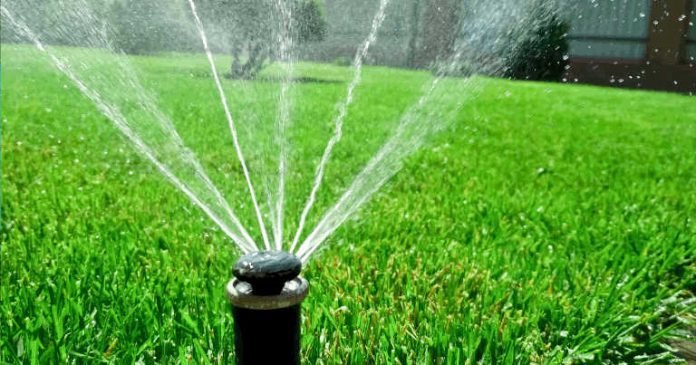Last Updated on October 15, 2022 by
When the grass needs it, remember to water it. Water conservation isn’t the only reason to limit the amount of lawn watering. Over-watering is not good for the health of your lawn, but it’s good for the growth of fungus and disease. Certain types of grass require more water than others, and environmental factors such as temperature, humidity, and wind can significantly affect how often you water your lawn. Fortunately, the most accurate way to determine if your lawn needs watering is also the easiest: Just look at the grass.
When the grass needs water, it will start to turn bluish-gray and some of the grass’s old leaves will start to curl up or wilt.
Footprints in the grass remain on the grass longer than usual, i.e, the grass does not “bounce”. When 30-50 percent of your lawn shows these symptoms, it’s time to water.
Deeper watering is good for deep root growth. Frequent shallow watering encourages weeds and also causes plants to have shallow roots, making them more susceptible to drought and certain diseases. Water when the plant really needs it, which encourages the grass roots to grow downwards, but you must use enough water each time so that the water goes through the entire root system.
The most accurate way to determine root depth is to dig a small hole and measure how deep the roots have grown. Also, you need to aerate the lawn to make sure that water can be directly guided into roots. For small lawn, you can use lawn aerator to save money, plug aerator or spike aerator in accordance with your needs.
Alternatively, you can follow this general estimation: if you have a bluegrass lawn, each watering should reach 15-20cm of soil, and for most other species, water should be 20-30cm deep. You can determine how long your sprinkler system needs to be on in one of several ways:
Turn on the sprinkler system for 15 minutes. After 18 to 24 hours, dig a small hole to see how deep the water seeps, or use a probe in the watered area (the probe will go through wet soil easily). You can also use a shovel to shovel into the soil and use the principle of leverage to dig up the soil so that you can see the soil below the topsoil. Once you see how deep the water is in 15 minutes, you can calculate how long you need to turn on the sprinkler system.
For example, if the wet part of the soil is 8 cm and your desired wet soil depth is 15 cm, you need to turn on the sprinkler system for 30 minutes (2 × 15 minutes) per watering.
Estimate how much water you’ll need based on soil type. In general, 2.5 cm of water will penetrate 30 cm of sandy soil, 15-20 cm of loamy soil, and 10 cm of clay. Using these estimates isn’t as accurate as digging, but it’s pretty close, especially if you have good knowledge about soil composition. Calibrate your sprinklers by knowing how long you need to leave the sprinkler or sprinkler system on.
Water early in the morning. When you use the sprinkler, some of the water droplets evaporates before the plants can reach them. To reduce evaporative loose, water between 4 am and 9 am when the air is still cool and the wind is usually calmer.
Avoid watering your lawn with hot water. On a hot day, the water in the hose can be very hot from the sun! It is best not to water it that day, and change it to the next morning. Open your hose after the sun goes down and drain the hot water inside.
Adjust the nozzle before watering. Aim the sprinkler right where it needs to be poured, no sidewalks or parts of the street! Slight adjustments to your sprinklers can save a lot of water. Ideally, you shouldn’t be pouring on sidewalks, yards, streets, or driveways at all.
Avoid runoff. Even with a properly aimed lawn spray, many people water it until the water runs off the lawn, onto the street or driveway. This wastes a lot of water with no benefit to your lawn.
If water starts to run off the sprinklers for 15 to 20 minutes to allow the soil to absorb the water, then continue watering as needed(spinning the sprinklers from one side to another side).
Some soils absorb water slower than another types, but runoff can also be caused by excessive thatch buildup, which can lead to lawn diseases– and sometimes from chronic over-watering.
Let the rain work for you. Nothing wastes more water than watering on a rainy day. If your sprinkler system has a timer, buy and install a rain sensor that automatically closes the valve when it rains. If possible, also avoid watering when it is forecast to rain later in the day or the next day. Your grass should be fine, even if it looks stressed.
Use a rain gauge tool to determine how much rain you’re getting, and then water when you need it.
If you are expecting rain and the soil is dry, turn on the sprinkler to moisten the soil and make it easier to absorb the rain.
Find a rain bucket. Use rainwater buckets to water gardens and landscaped areas. A properly installed rain barrel can collect rainwater from your home’s gutters and provide ample water for gardens and landscaping areas. Collecting this rainwater reduces runoff, which is likely to mix with trash, oils, fertilizers, pesticides, and other pollutants on lawns, sidewalks, and streets. This also reduces the amount of pollution entering rivers, lakes, streams and oceans.
Water the problematic areas yourself. Many lawns have one or two spots that require more water than others. A south-facing slope (or north-facing in the southern hemisphere), or a lawn with only one unshaded area and shaded elsewhere, are two common examples of these “problem areas”. If you water the high-demand areas every time, you may be watering the high-demand areas normally and over-watering the other areas. Instead, water the two areas, or use a combination of sprinklers that separated before.
Read More: Why Is Artificial Lawn Better Than Natural Grass?























